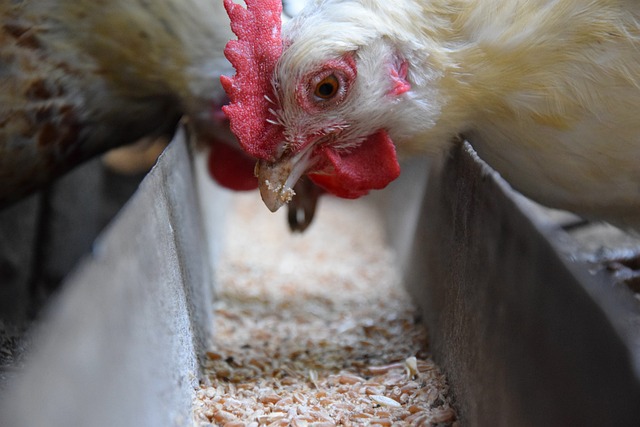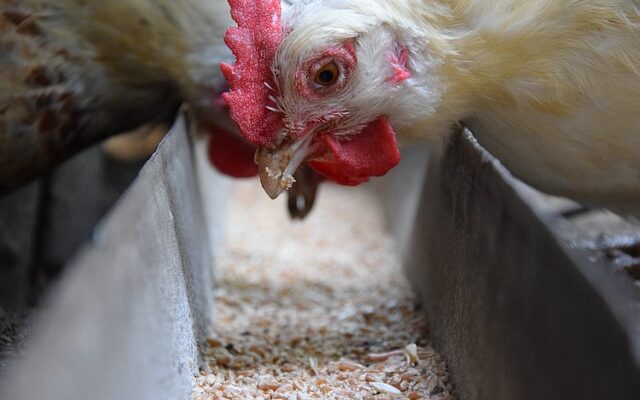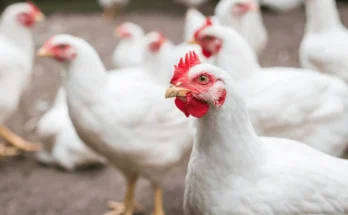Understanding Common Chicken Sickness and Symptoms
Chicken sickness and symptoms can be concerning for any poultry farmer. Recognizing the signs of illness early can be crucial in preventing the spread of disease and ensuring the overall health of your flock. In this blog post, we will discuss common chicken illnesses and their symptoms, empowering you to identify and address potential health issues in your poultry. Understanding these signs can help you take proactive measures to maintain the well-being of your chickens.
Understanding Common Chicken Sicknesses
Overview of Common Chicken Diseases
Keeping your flock healthy is crucial for maintaining their well-being and productivity. Understanding the common diseases that can affect chickens is essential for early detection and effective treatment. Some of the most prevalent chicken diseases include:
- Marek’s Disease: This highly contagious viral disease affects the nervous system, causing paralysis and tumors in affected birds.
- Infectious Bronchitis: A viral respiratory disease that can lead to decreased egg production and poor egg quality.
- Fowl Pox: A viral infection characterized by skin lesions and scabs on the comb, wattles, and other unfeathered areas.
- Coccidiosis: Caused by protozoan parasites, this disease can lead to bloody diarrhea and decreased growth in young chickens.
- Avian Influenza: A viral infection that can result in respiratory distress, decreased egg production, and high mortality rates.
Key Symptoms to Look Out for in Sick Chickens
Early detection of illness in chickens relies on recognizing key symptoms that may indicate a health issue. Some common symptoms to watch for include:
- Decreased Egg Production: A sudden decrease in egg production may signal an underlying health problem in the flock.
- Respiratory Distress: Wheezing, coughing, sneezing, and nasal discharge are indicators of respiratory infections.
- Lethargy and Weakness: Chickens that appear listless, have ruffled feathers, or exhibit weakness may be unwell.
- Diarrhea: Changes in the consistency and color of feces can point to digestive issues or parasitic infections.
- Unusual Behavior: Any deviation from normal behaviors, such as decreased appetite or isolation from the flock, could indicate sickness.
Understanding these common diseases and their associated symptoms empowers poultry owners to take prompt action in preventing the spread of illnesses and seeking appropriate veterinary care when necessary. Many chicken sickness and symptoms can be vary similar for a variety of issues, however use this guide as a good starting place.
Respiratory Issues
Chickens, like all creatures, can suffer from respiratory problems. It’s essential for poultry farmers and backyard chicken keepers to recognize the signs of respiratory infections and be aware of the most common respiratory diseases that can affect their flock.
Signs of Respiratory Infections in Chickens
- Labored breathing
- Sneezing and coughing
- Nasal discharge
- Wheezing or rattling sounds when breathing
- Decreased egg production
- Watery or swollen eyes
- Shaking of the head
- Gasping for air
- Reduced activity and lethargy
Common Respiratory Diseases in Chickens
- Infectious Bronchitis: This highly contagious viral infection causes respiratory distress and a drop in egg production. Infected chickens may produce eggs with thin, brittle shells or with no shells at all.
- Mycoplasma Gallisepticum (MG) Infection: MG is a widespread chronic respiratory disease in chickens, leading to respiratory distress and decreased egg production. Infected birds may also display swelling around the eyes and nasal discharge.
- Infectious Laryngotracheitis (ILT): ILT is a highly contagious viral respiratory infection that can cause severe breathing difficulties, coughing, and sneezing. Infected chickens may produce eggs with soft shells or blood spots.
Recognizing these signs and diseases promptly is crucial for the health and well-being of your flock. Regular observation and proper veterinary care are essential in managing respiratory issues in chickens. Breathing issues are common in dusty environments and are a major cause to the state of chicken sickness and symptoms.
Digestive Problems

A chicken’s digestive system can be susceptible to various illnesses, impacting their overall health and well-being. Understanding the common symptoms and illnesses associated with digestive problems in chickens is essential for prompt identification and treatment.
Symptoms of Digestive Issues in Chickens
- Decreased appetite: Chickens experiencing digestive problems may show a reduced interest in eating.
- Diarrhea or abnormal feces: Changes in the consistency, color, or frequency of droppings can indicate digestive distress.
- Lethargy: Digestive issues often lead to decreased activity levels in chickens.
- Weight loss: Unexplained weight loss can be a sign of underlying digestive problems.
- Abdominal discomfort: Chickens may exhibit signs of discomfort in the abdominal area, such as straining or hunching.
Common Digestive Illnesses in Chickens
- Coccidiosis: This parasitic disease affects the intestinal tract of chickens, leading to diarrhea, weight loss, and general weakness if left untreated.
- Impacted Crop: When a chicken’s crop becomes impacted, it can result in digestive disturbances, regurgitation, and foul breath.
- Sour Crop: This condition occurs when the crop is unable to effectively pass food to the digestive system, causing a sour-smelling breath and a swollen, squishy crop.
Understanding these symptoms and illnesses can help chicken owners identify and address digestive problems promptly, ensuring the overall well-being of their flock.
Parasitic Infections
Parasitic infections can significantly impact the health and well-being of chickens. Identifying these infections and understanding the common parasites affecting chickens is crucial for effective management and treatment.
Identifying Parasitic Infections in Chickens
When it comes to identifying parasitic infections in chickens, it’s essential to closely observe their behavior and physical condition. Look out for symptoms such as decreased egg production, weight loss, diarrhea, and abnormal feathering. Additionally, pay attention to any signs of irritation or discomfort, as chickens may exhibit scratching or pecking at their feathers when affected by parasites.
Regularly inspecting the coop and nesting areas for any signs of infestation, such as the presence of mites or lice, can aid in early detection. Furthermore, consulting with a veterinarian for routine check-ups and diagnostic testing can help identify parasitic infections before they escalate.
Common Parasites Affecting Chickens
Several parasites can affect chickens, leading to various health issues. Some of the most common parasites include:
- Mites: These tiny creatures can cause skin irritation, feather loss, and anemia in chickens. Red mites, in particular, are notorious for feeding on chickens at night, impacting their overall health.
- Lice: Lice infestations can result in skin irritation, feather damage, and decreased egg production. They are commonly found in the feathers and around the vent area of chickens.
- Worms: Internal parasites such as roundworms, tapeworms, and other intestinal worms can cause digestive disturbances and nutrient deficiencies in chickens, affecting their growth and productivity.
By remaining vigilant and implementing proactive measures, such as regular cleaning and sanitization of the coop, as well as incorporating preventive treatments, chicken owners can effectively manage and mitigate the risks associated with parasitic infections.
Reproductive System Disorders
Recognizing Reproductive Problems in Chickens Chickens experiencing reproductive system disorders may exhibit symptoms such as lethargy, reduced egg production, abnormal eggshells, or even egg binding. Additionally, you may observe changes in their behavior, such as reluctance to perch or vocalization indicating distress or discomfort.
Common Reproductive Disorders in Chickens
- Egg Yolk Peritonitis: This disorder occurs when the yolk of an egg is released into the abdominal cavity instead of being laid. It can lead to bacterial infections and inflammation in the abdominal cavity.
- Egg Binding: This occurs when a hen is unable to lay an egg due to various factors such as calcium deficiency, obesity, or an oversized egg. It can be a life-threatening condition if not promptly addressed by a veterinarian.
- Oviduct Prolapse: This disorder involves the protrusion of the oviduct from the hen’s vent. It can be caused by stress, genetics, or other reproductive issues and requires immediate veterinary attention.
- Reproductive Cancer: Chickens may also suffer from ovarian or oviductal tumors, which can impact their reproductive health and overall well-being. Regular veterinary check-ups are essential for early detection.
Understanding these reproductive disorders in chickens is crucial for timely intervention and ensuring the well-being of your flock.
Neurological Conditions
Signs of Neurological Issues in Chickens
Chickens with neurological issues may display a range of symptoms such as walking in circles, head tremors, or paralysis in the legs or wings. They may also have difficulty standing or holding their heads upright. Other signs include sudden behavioral changes, such as increased aggression or a lack of coordination.
Common Neurological Disorders in Chickens
One common neurological disorder in chickens is Marek’s disease, a viral condition that affects the nervous system. This disease can cause tumors to develop in the nerves and organs, leading to paralysis and other neurological symptoms. Another disorder is Avian Encephalomyelitis, which affects the brain and spinal cord, causing symptoms like tremors, weakness, and incoordination.
Skin and Feather Problems
Indicators of Skin and Feather Diseases in Chickens
Skin and feather problems in chickens can be visually distressing and can affect the overall health of the bird. Indicators of skin and feather diseases include the presence of scaly skin, feather loss, abnormal molting, inflammation, and the appearance of sores or lesions. Additionally, a dull or discolored appearance of feathers can also signal an underlying problem.
Common Skin and Feather Issues in Chickens
- Mites and Lice Infestation: These microscopic parasites can lead to severe itching and feather loss in chickens. Common signs include restlessness, feather pecking, and visible mites or lice on the skin and feathers.
- Fowl Pox: This viral disease can cause scabby sores on the comb, wattles, and other unfeathered areas. In severe cases, lesions may also develop in the throat, leading to respiratory distress.
- Feather Pecking: This behavior can result from stress, overcrowding, or nutritional deficiencies, leading to feather damage and skin irritation.
- Molting Abnormalities: Irregular or prolonged molting patterns can indicate issues with diet, stress, or underlying health conditions.
Recognizing these common skin and feather problems in chickens is crucial for maintaining their well-being and preventing the spread of diseases within the flock. Regular health assessments and prompt intervention can help mitigate the impact of these issues on the overall health and productivity of the birds.
Conclusion
In conclusion, recognizing the symptoms of illness in chickens is crucial for maintaining a healthy flock. By staying vigilant for signs such as lethargy, decreased egg production, abnormal droppings, and respiratory issues, you can promptly address any health concerns and prevent the spread of illness. Regular observation and quick intervention can significantly impact the overall well-being of your chickens and the success of your poultry operation. This guide should help you in spotting any chicken sickness and symptoms, and give you a good place to start in addressing it. We also have a great article discussing the most hardy and cold weather suited chickens here which we recommend you read to ensure your chickens are resilient enough for cold climate.



